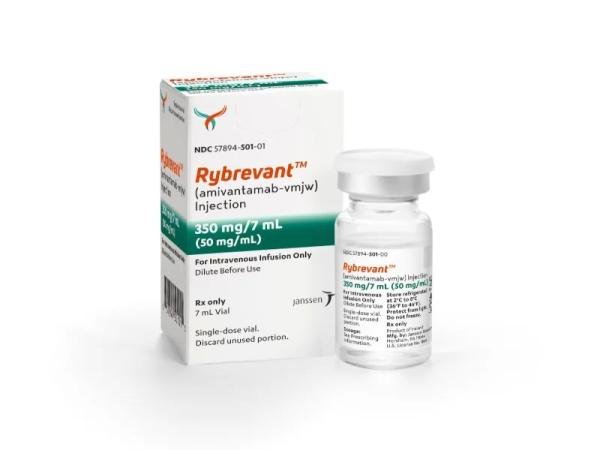Amivantamab Disease Interactions
There are 3 disease interactions with amivantamab.
Amivantamab (applies to amivantamab) ILD/pneumonitis
Moderate Potential Hazard, Moderate plausibility. Applicable conditions: Pulmonary Impairment
Amivantamab can cause interstitial lung disease (ILD)/pneumonitis. Care should be exercised when using this drug in patients with preexisting pulmonary impairment. Amivantamab should be immediately withheld in patients with suspected ILD/pneumonitis and permanently discontinued if ILD/pneumonitis is confirmed. Patients should be monitored for new/worsening symptoms indicative of ILD/pneumonitis.
Amivantamab (applies to amivantamab) liver dysfunction
Moderate Potential Hazard, Moderate plausibility. Applicable conditions: Liver Disease
Care should be exercised when using amivantamab in patients with moderate (total bilirubin 1.5 to 3 times the upper limit of normal [1.5 to 3 x ULN]) to severe (total bilirubin greater than 3 x ULN) liver dysfunction as the pharmacokinetics of amivantamab have not been studied in these patients. No clinically significant differences in the pharmacokinetics of amivantamab were observed based on mild liver dysfunction (total bilirubin up to ULN and AST greater than ULN or total bilirubin greater than ULN and up to 1.5 x ULN).
Amivantamab (applies to amivantamab) renal dysfunction
Moderate Potential Hazard, Moderate plausibility.
Care should be exercised when using amivantamab in patients with severe renal dysfunction (CrCl 15 to 29 mL/min) or end-stage renal disease (CrCl less than 15 mL/min) as the pharmacokinetics of amivantamab have not been studied in these patients. No clinically significant differences in the pharmacokinetics of amivantamab were observed based on CrCl 29 to 276 mL/min.
Switch to professional interaction data
Amivantamab drug interactions
There are 19 drug interactions with amivantamab.
More about amivantamab
- amivantamab consumer information
- Check interactions
- Compare alternatives
- Reviews (5)
- Side effects
- Dosage information
- During pregnancy
- Drug class: miscellaneous bispecific antibodies
- Breastfeeding
- En español
Related treatment guides
Drug Interaction Classification
| Highly clinically significant. Avoid combinations; the risk of the interaction outweighs the benefit. | |
| Moderately clinically significant. Usually avoid combinations; use it only under special circumstances. | |
| Minimally clinically significant. Minimize risk; assess risk and consider an alternative drug, take steps to circumvent the interaction risk and/or institute a monitoring plan. | |
| No interaction information available. |
See also:
Further information
Always consult your healthcare provider to ensure the information displayed on this page applies to your personal circumstances.


